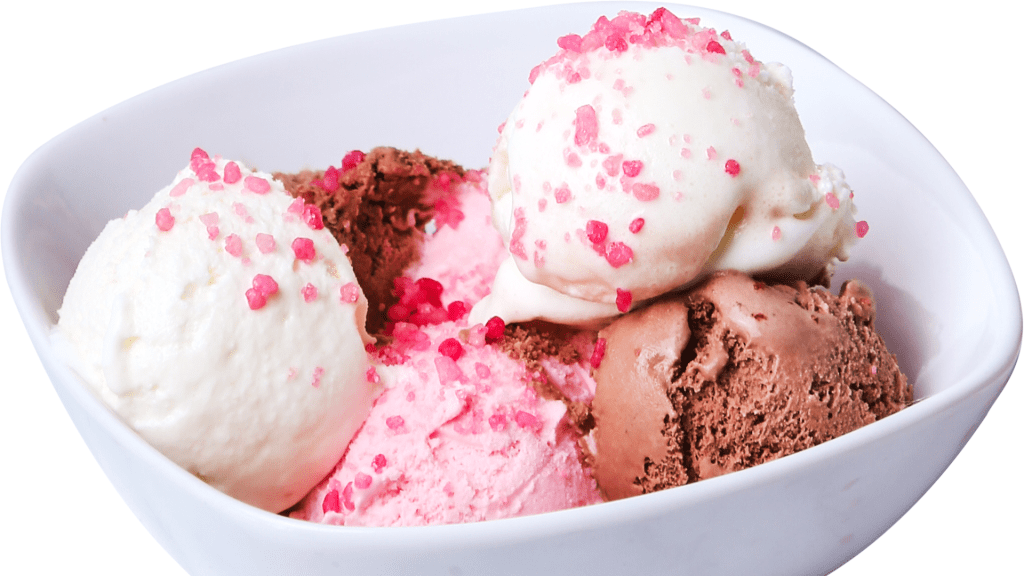Ice cream is a delicious treat that many of us enjoy on a hot summer day, but have you ever wondered if your feline friend can join in on the fun? Cats are known for their finicky eating habits, and as cat owners, we want to ensure that our furry companions are safe and healthy. So, can cats eat ice cream?
Well, the short answer is no, cats should not eat ice cream. Ice cream is not a natural food for cats and can cause several health issues. The high sugar and fat content in ice cream can cause digestive problems and even lead to obesity.
Additionally, cats are lactose intolerant, which means that they are unable to digest lactose, a sugar found in milk products. This means that they cannot handle dairy products like ice cream, which can cause stomach upset and diarrhea.
But that’s not all. There are many other things you need to be aware of when it comes to cats and ice cream.
Nutritional Value of Ice Cream
Ice cream is a delicious and popular treat that many people enjoy on a regular basis. However, it is often thought of as an unhealthy food due to its high sugar and fat content. While it is true that ice cream is not the most nutrient-dense food out there, it can still provide some important nutritional benefits.
One of the main nutritional benefits of ice cream is its calcium content. Calcium is an essential mineral that is necessary for strong bones and teeth. Ice cream, particularly dairy-based ice cream, is a good source of calcium. A single serving of ice cream can provide up to 10% of the recommended daily intake of calcium.

Another important nutrient found in ice cream is vitamin D. Vitamin D is necessary for proper bone health and can help prevent osteoporosis. Dairy-based ice cream is a good source of vitamin D, with a single serving providing up to 10% of the recommended daily intake.
Ice cream can also provide some protein. Protein is essential for building and repairing muscle tissue. Dairy-based ice cream is a good source of protein, with a single serving providing up to 5 grams of protein.
Lastly, ice cream is a good source of energy. It is rich in calories and carbohydrates, which can provide energy to the body. This makes it a great option for people who are looking for a quick boost of energy.
Can Cats Eat Ice Cream?
So, can cats eat ice cream? Based on the available information, it is not recommended to feed ice cream to cats as a regular part of their diet. Ice cream is low in protein and essential amino acids and is high in calories and sugar, which can be detrimental to a cat’s health if consumed in large amounts. In addition, there is a risk of lactose intolerance, choking, allergic reactions, and obesity and dental problems if ice cream is fed to cats.
However, if you do decide to offer your cat a small amount of ice cream as an occasional treat, there are a few guidelines to follow to ensure their safety:
- Introduce Ice Cream Slowly
- As with any new food, it is important to introduce ice cream slowly to your cat’s diet to make sure they do not have any adverse reactions
- Choose a Lactose-Free or Low-Lactose Ice Cream
- If you want to offer your cat ice cream as a treat, it is best to choose a lactose-free or low-lactose variety. This will help to minimize the risk of gastrointestinal upset due to lactose intolerance.
- Cut the Ice cream Into Small Pieces
- Ice cream should be cut into small pieces to prevent choking.
- Watch for Allergic Reactions:
- Some cats may have an allergic reaction to the ingredients in ice cream. If you notice any symptoms of an allergic reaction, such as vomiting, diarrhea, or difficulty breathing, stop feeding your cat ice cream and consult your veterinarian.
Possible Risks of Feeding Ice Cream to Cats
In addition to the lack of nutritional value, there are several potential risks to consider when it comes to feeding ice cream to cats. Here are a few things to keep in mind.

- Your Cat Is Lactose Intolerant
- One risk is the possibility of lactose intolerance. Many cats are unable to digest lactose, a sugar found in milk and milk products, due to a deficiency in the enzyme lactase. Consuming lactose can lead to gastrointestinal upset, such as diarrhea, vomiting, and bloating.
- Choking
- Another risk to consider is the possibility of choking. Cats have small throats and may struggle to swallow large pieces of food, which could lead to choking. If you do decide to offer your cat ice cream, be sure to cut it into small pieces to prevent this from occurring.
- Allergic Reaction
- A third risk to consider is the possibility of an allergic reaction. Some cats may have an allergic reaction to the ingredients in ice cream, such as milk, cream, or sugar. Symptoms of an allergic reaction in cats may include vomiting, diarrhea, and difficulty breathing. If you notice any of these symptoms after giving your cat ice cream, stop feeding it to them and consult your veterinarian.
- Obesity
- Finally, it is important to consider the risk of obesity and dental problems if ice cream is fed to cats in large amounts or on a regular basis. As mentioned, ice cream is high in calories and sugar, which can contribute to weight gain and dental issues such as tooth decay.
Ice Cream Treat Alternatives For Cats
As cat owners, we want to give our furry friends the best care possible, and that means providing them with a safe and healthy diet. While ice cream is not a suitable treat for cats, there are alternative treats that they can enjoy. Here are a few suggestions for safe and healthy treats for cats
- Frozen Treats
- Cats can enjoy frozen treats such as watermelon or yogurt. These treats provide hydration and a refreshing taste without the added sugar and fat found in ice cream. Additionally, you can make your own frozen treats at home with ingredients that are safe for cats, such as chicken or fish broth.
- Commercial Cat Treats:
- There are many commercial cat treats available that are specifically formulated to meet the nutritional needs of cats. These treats are a great option for cat owners who want to give their furry friends a special treat.
- Homemade Treats:
- You can make your own homemade treats for your cat with ingredients such as cooked chicken or fish. These treats are safe and healthy for cats, and you can control the ingredients used.
Remember, consulting with a veterinarian before introducing new foods to your cat’s diet is crucial for ensuring their safety and well-being. Keep this is mind next time you give your cat any treat they may or may not be used too.
FAQ
Is it okay to give cats dairy products?
While cats may enjoy dairy products, they may have difficulty digesting them. Many cats are lactose intolerant, meaning they lack the enzyme needed to digest lactose, the sugar found in milk and dairy products. This can lead to digestive upset and diarrhea.
My cat stole a lick of my ice cream, should I be worried?
A small lick of ice cream is unlikely to cause any harm to a healthy cat. However, it is important to keep in mind that regular consumption of high-sugar, high-fat treats like ice cream can lead to obesity and other health issues.
Can I give my cat a small amount of low-fat ice cream as a treat?
While low-fat ice cream may be lower in calories than regular ice cream, it still contains sugar and other ingredients that may not be suitable for a cat’s diet. It’s best to stick to treats that are specifically designed for cats. Consult with your vet for more information.
Final Thoughts
ice cream is not a safe or healthy food for cats to consume. As we have discussed, ice cream can cause several health issues for cats such as digestive problems, lactose intolerance, and the dangers of sugar. It is important for cat owners to be aware of these potential dangers and to provide their furry friends with a safe and healthy diet.
Has your cat ever had ice cream before? Did he/she have a bad reaction? Tell us your story in the comment section below and as always feel free to checkout our other blog articles on cat behavior and cat nutrition.
